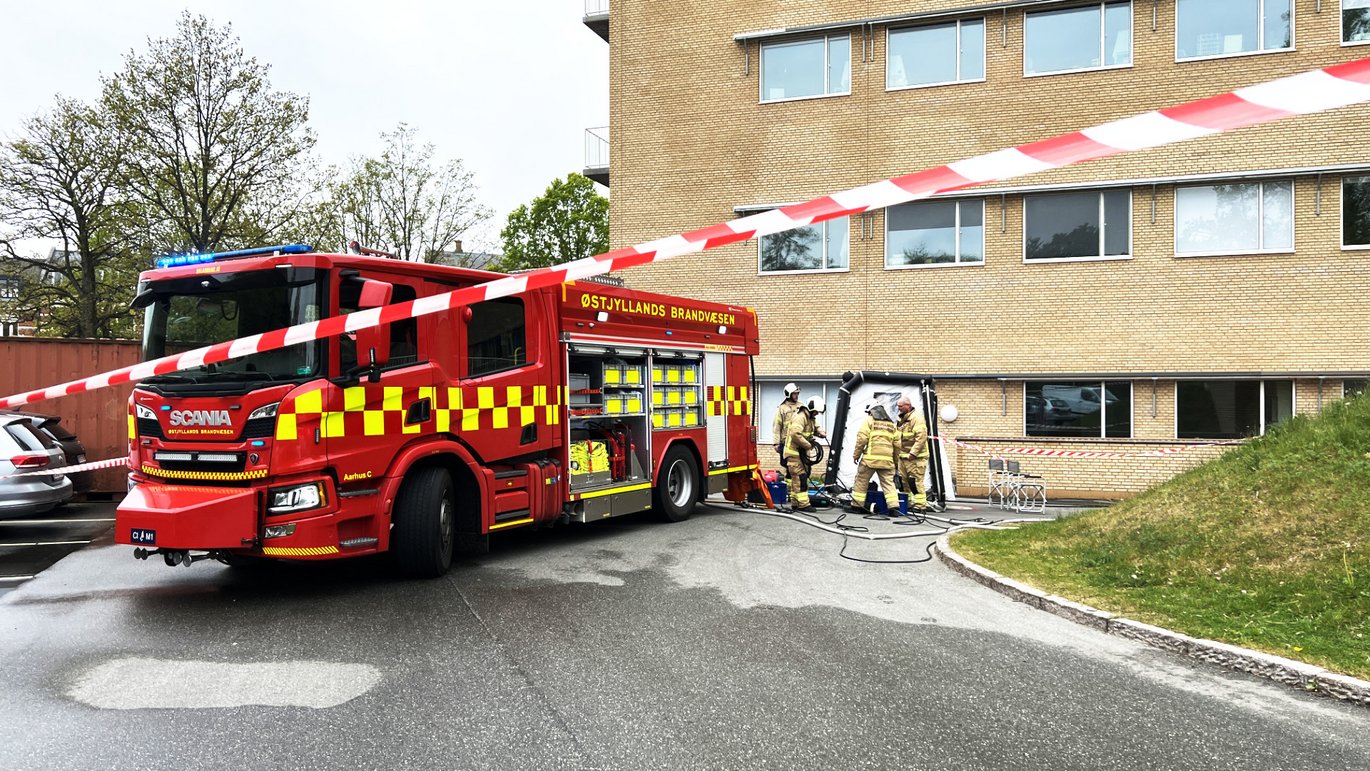Employees praised following dramatic evacuation
Six fire engines, smoke divers, police and press photographers were quickly on the scene following the evacuation of the Skou Building at the Department of Biomedicine. Fortunately there was no need to panic.

The morning took a dramatic turn at the Department of Biomedicine on Wednesday 11 May.
At 08:51, an automatic voice alarm ordered everyone to leave the building, and 200-300 employees and students had to hurry outside.
At the same time, Aarhus Fire Brigade received an alarm triggered by smoke or steam Skou Building's waste disposal room for dangerous waste.
The East Jutland Fire Brigade took the alarm extremely seriously, as smoke or vapour from biological material could be the cause. The incident commander therefore sent six fire engines, while the police closed off a large area, fearing that a spillage of chemicals or biological material had occurred in the Skou Building, which is located in the lower part of the University Park close to Høegh-Guldbergs Gade.
Smoke divers were sent into the basement, and seeing the yellow Biological Hazard warning signs on a number of nitrogen tanks only reinforced their theory that biological material was the cause of the smoke.
The Danish Emergency Management Agency was on the way
Anders Rathcke, Head of Operations at the East Jutland Fire Brigade, told TV2 Østjylland that the brigade approached the incident based on the highest risk scenario. This meant that there were many emergency responders present, and that the fire brigade's dangerous material experts took no chances while investigating what triggered the suspected chemical reaction in their specialist protective gear.
However, Deputy Head of Department at the Department of Biomedicine Thomas Corydon was able to convince the fire brigade that the team from the Emergency Management Agency, who were already on the way from their base eighty kilometres away, could turn back and would not be needed at the site.
He pulled on protective gear and joined the firemen in the disposal room for dangerous waste, where he could quickly ascertain that there were no dangerous chemical reactions involved. On the contrary, there was a small leak of nitrogen that had leaked out of a pressure valve.
The evacuation was cancelled shortly before 11:00 and the police and fire brigade returned to their stations.
Department Head Thomas G. Jensen is pleased that the safety procedures worked, and he praises the authorities for their rapid and consistent actions.
"The alarms work, and the evacuation generally went as intended. Now we will naturally discuss the safety procedures again, so we can avoid something similar happening in the future," he adds.
"We've had evacuation drills as recently as in the autumn of 2021, so both staff and students were prepared for what they should do, and they reacted by the book," says Thomas G. Jensen.
The evacuation made the news in Danish media including TV2 Østjylland, BT, Århus Stiftstidende, Horsens Folkeblad and Omnibus.